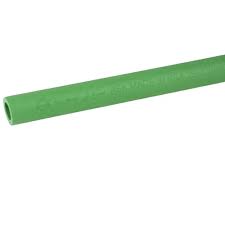Dec . 10, 2024 05:34 Back to list
dn500 hdpe double wall corrugated pipe for sewage drain manufacturers
Understanding DN500 HDPE Double Wall Corrugated Pipe for Sewage Drainage
In the world of civil engineering and infrastructure development, the effective management of sewage and wastewater is a critical issue. A variety of piping solutions have emerged to tackle the challenges associated with sewage systems. One of the most prominent among these is the DN500 HDPE double wall corrugated pipe, which has gained widespread recognition among manufacturers and engineers alike. This article delves into the features, advantages, applications, and the manufacturing process associated with this type of pipe.
What is DN500 HDPE Double Wall Corrugated Pipe?
The DN500 HDPE (High-Density Polyethylene) double wall corrugated pipe is designed specifically for drainage applications, particularly for sewage and stormwater management. The DN500 designation indicates the nominal diameter of the pipe, which is 500 millimeters. The double-wall construction consists of an inner smooth layer and an outer corrugated layer, offering enhanced strength and flexibility.
The inner smooth surface allows for a reduced friction coefficient, enabling efficient fluid flow, while the outer corrugated layer provides structural integrity and resistance to external loads. This combination makes the DN500 HDPE pipe both lightweight and remarkably durable, capable of withstanding harsh environmental conditions.
Advantages of DN500 HDPE Double Wall Corrugated Pipe
1. Durability and Longevity HDPE is known for its excellent resistance to corrosion, chemicals, and abrasion, making it ideal for sewage applications. The double-wall design reduces the likelihood of pipe failure due to ground movement or external loads.
2. Lightweight Compared to traditional materials like PVC or concrete, HDPE pipes are significantly lighter, making transportation and installation easier and less labor-intensive.
3. Cost-Effectiveness The use of HDPE can lead to long-term cost savings. While the initial investment might be comparable to other materials, the durability and reduced maintenance needs of HDPE pipes often result in lower lifecycle costs.
4. Flexibility The corrugated structure provides flexibility, allowing for installation in a variety of challenging terrains without the risk of breaking under stress.
5. Environmental Friendliness HDPE is a recyclable material that has a lower environmental impact both in its manufacturing and disposal compared to traditional materials.
Applications
DN500 HDPE double wall corrugated pipes are commonly utilized in several applications, including
dn500 hdpe double wall corrugated pipe for sewage drain manufacturers

- Sewage Systems Used extensively in municipal and industrial sewage systems, ensuring effective transport of waste away from populated areas.
- Stormwater Management These pipes facilitate the efficient drainage of stormwater, reducing the risk of flooding in urbanized regions.
- Landfill and Waste Management HDPE pipes are used for leachate collection systems in landfills, contributing to effective waste management practices.
- Irrigation Systems Due to their resistance to corrosion and clogging, these pipes can be employed in agricultural irrigation systems.
Manufacturing Process
The production of DN500 HDPE double wall corrugated pipes involves several key steps
1. Material Preparation HDPE resin is supplied in pellet form, which is then melted and extruded into the required pipe shape.
2. Extrusion Advanced extrusion technologies are used to form the pipe. During this process, the resin is forced through a die to create the inner smooth wall and the outer corrugated wall simultaneously.
3. Cooling and Sizing After extrusion, the pipes are cooled and sized to ensure they meet industry standards for diameter and wall thickness.
4. Quality Control Rigorous testing is conducted at various stages of production to ensure product consistency, strength, and durability.
5. Cutting and Packaging Finally, the pipes are cut to specified lengths and packaged for distribution.
Conclusion
The DN500 HDPE double wall corrugated pipe stands out as a robust solution for sewage drainage systems. With its unique design, durability, and cost-effectiveness, this type of piping has become a go-to choice for manufacturers and engineers working to improve infrastructure. As the world increasingly focuses on sustainable construction practices, the demand for HDPE solutions is set to grow, making it a significant player in the field of civil engineering.
-
High-Quality PVC Borehole Pipes Durable & Versatile Pipe Solutions
NewsJul.08,2025
-
High-Quality PVC Perforated Pipes for Efficient Drainage Leading Manufacturers & Factories
NewsJul.08,2025
-
High-Quality PVC Borehole Pipes Durable Pipe Solutions by Leading Manufacturer
NewsJul.08,2025
-
High-Quality PVC Borehole Pipes Reliable PVC Pipe Manufacturer Solutions
NewsJul.07,2025
-
High-Quality UPVC Drain Pipes Durable HDPE & Drain Pipe Solutions
NewsJul.07,2025
-
High-Quality Conduit Pipes & HDPE Conduit Fittings Manufacturer Reliable Factory Supply
NewsJul.06,2025

